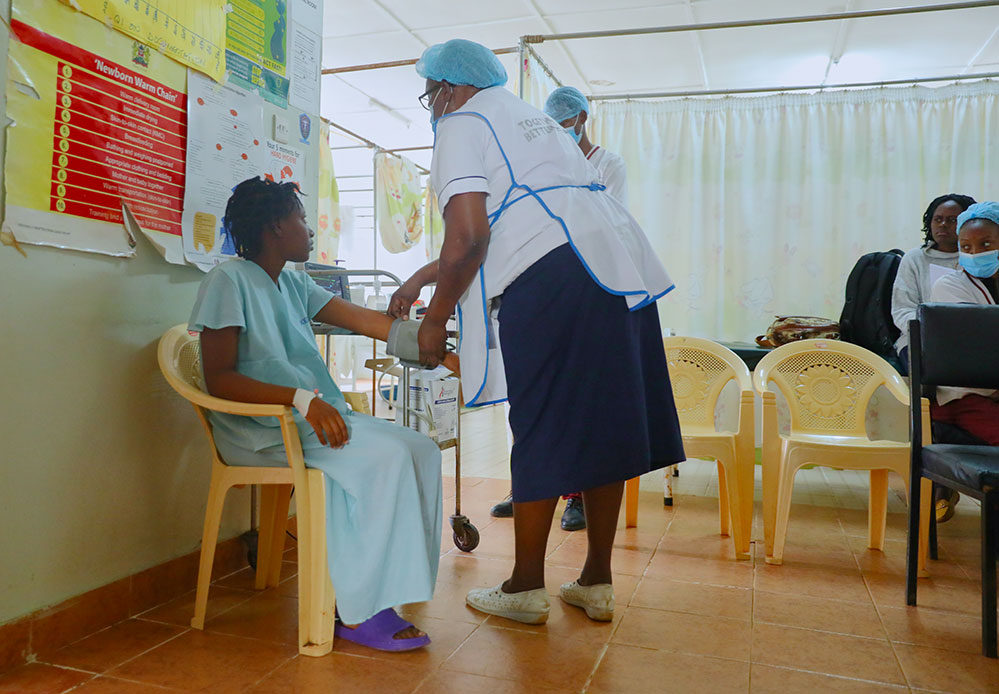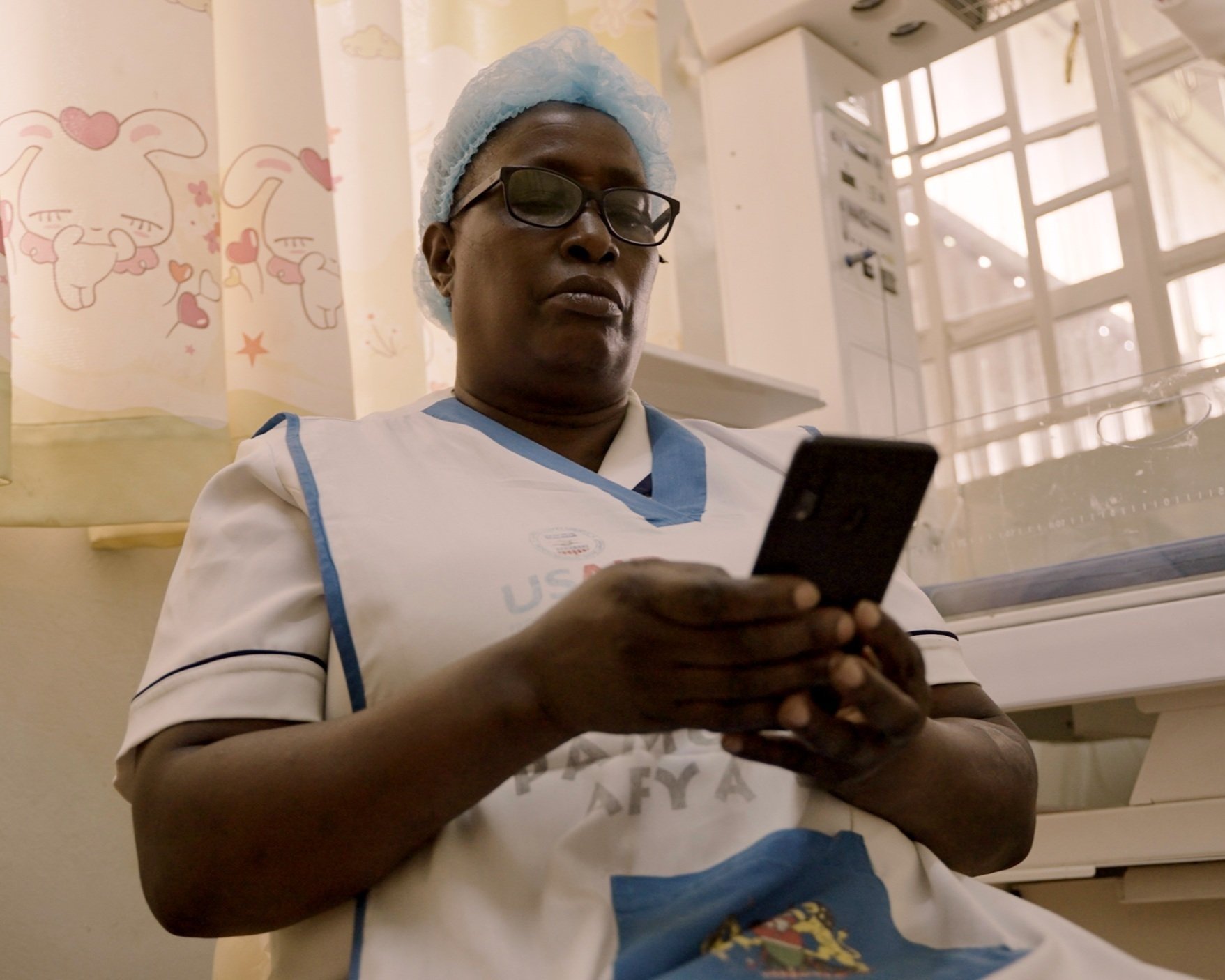Alice first came across Jacaranda’s MENTORS program at the end of 2020, at the time she was transitioning into her new role as Head Nurse at Mutuini. The program takes a ‘training-of-trainers’ approach, empowering government nurse champions to continuously develop critical emergency care skills amongst the providers in their facilities.
Each month, nurses like Alice in partner facilities receive training through practical simulation on core emergency care subjects, like postpartum hemorrhage (excessive bleeding after delivery), pre-eclampsia (high blood pressure during pregnancy), and neonatal resuscitation.
Critically, they transport this classroom knowledge to their respective maternity wards. On-site training is routinely delivered via Continuous Medical Education (or CMEs), which, as Alice explains, are scheduled according to need. ‘
A provider might arrive in our facility without good knowledge about the resuscitation of a baby, or monitoring a mother in labor. So we plan these sessions according to the challenges we face.’

But for Alice, CMEs mean more than reinforcing knowledge. Staff come and go, sometimes as quickly as the patients themselves, leaving patchy visibility on the quality of care mothers receive. The training offers a channel to enforce consistent care across the facility and at different levels of seniority. ‘We see so much movement of staff between facilities’. Alice explains. ‘Mistakes happen, but before [MENTORS] we didn’t have a way of making them part of our improvement. Now our providers – no matter how new they are – learn from each other, and we correct mistakes then and there.’
Today, a group of facility in-charges and medical students cluster around Alice for a CME on shoulder dystocia, an obstetric emergency where the baby’s shoulders are stuck after delivery of the head. It’s a case that Alice’s team have wrestled with on occasions in recent months. While shoulder dystocia largely tends to be unpredictable, Alice takes her class through approaches to identify risk factors including estimating the foetal weight through fundal height measurement and ultrasound.
They collaboratively discuss appropriate diagnosis and, importantly, alleviation through the HELPER mnemonic, describing step-by-step treatment approaches. After 30 minutes, the class closes their notebooks and resumes work on the ward. This deliberately concise format, paired with the decision to conduct them onsite helps maintain the time providers spend providing services to their patients, and ensures theoretical learning can be immediately applied in practice. In a busy ward, this is paramount.
We had a new provider join our ward last week. I’ve been watching her grow under my leadership. Last week she managed a difficult delivery under my supervision. We’d run through the training just a week before and she felt ready to handle it with my support.’
Jacaranda’s emphasis on the ‘continuous’ aspect training extends beyond the CMEs. Providers reinforce their training remotely via a digital learning tool DELTA, consisting of scenario-based modules that, in Alice’s words, ‘feel relevant and realistic to what we’re doing here at Mutuini [her facility]’.
Importantly, while providers are given the option to learn ‘anywhere, anytime at [their] own comfort’, the data collected from their module progress and scores gives health system managers ‘finger on the pulse’ information on knowledge gaps that might correlate with poor quality care in facilities.
No two emergency cases are ever identical, but fatalities can be averted through routine reinforcement of the core principles of detection and response, and the cross-sharing of provider experiences.
By combining training that happens where providers deliver services with a digital tool that promotes continuous learning when they get home, Jacaranda’s package of EmONC learning tools is a practical, low-cost approach to ensuring better care for mothers in facilities.
‘Our clients really trust our ability to support them – even in the most difficult of cases. It’s why we got into these jobs in the first place, and we’re only going to get better and better.’

